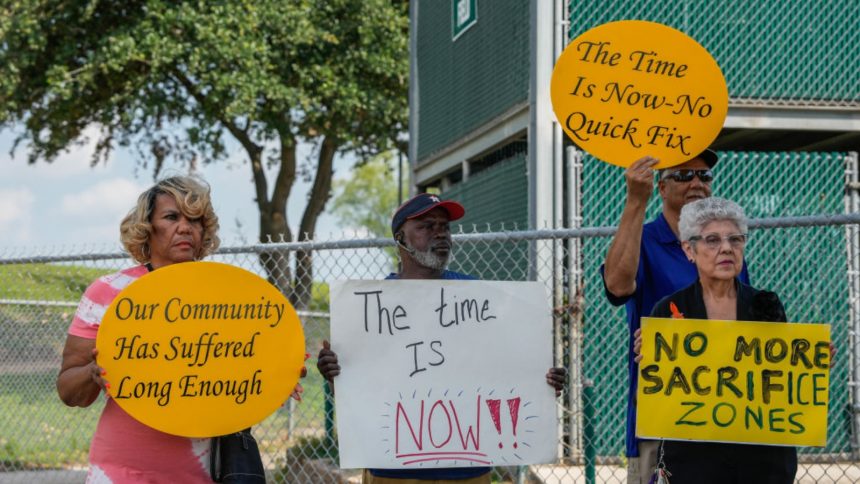In 1979, Margaret Bean took on the Texas state government’s decision to allow a landfill in her Houston neighborhood, which was predominantly nonwhite. This marked the first major environmental justice case in federal court, highlighting the pattern of siting landfills in minority communities. Despite legal challenges, proving discriminatory intent was difficult due to Supreme Court rulings. By the late 1990s, a new approach emerged with the EPA’s Title VI regulation, focusing on disparate impacts. However, the EPA’s lack of enforcement led to lawsuits. In 2020, a federal judge ruled in favor of communities suing the EPA, prompting investigations into civil rights complaints in Louisiana and Illinois. Conservative state governments pushed back, challenging EPA’s authority, ultimately leading to legal battles and calls for suspension of Title VI enforcement. Despite some victories, communities in places like Chicago and Memphis have used Title VI to address environmental injustices. Conversely, Texas residents faced setbacks when the EPA allowed the Texas Commission on Environmental Quality to withdraw from negotiations, citing ongoing litigation. Democratic attorneys general have supported the EPA’s Title VI review process as a crucial tool for combating environmental disparities rooted in historical racism. Environmental law professor Sheila Foster emphasizes that civil rights law considers the holistic impact of environmental hazards, which traditional regulations often overlook. Despite challenges under the Biden administration, advocates fear a rollback of progress under a potential return to Trump-era policies. At the core of Title VI cases is the need to address environmental harm in communities through a broader lens of justice and equality.






